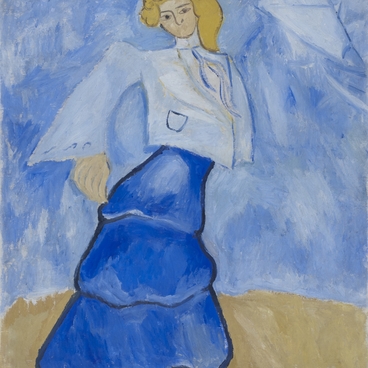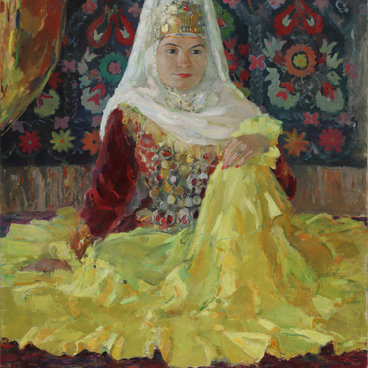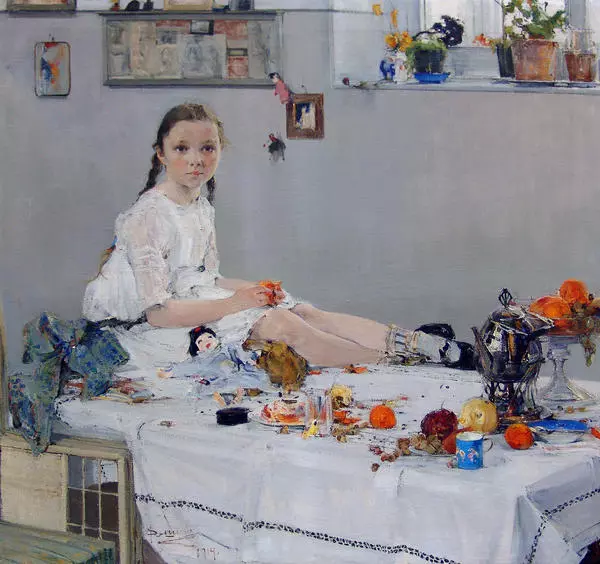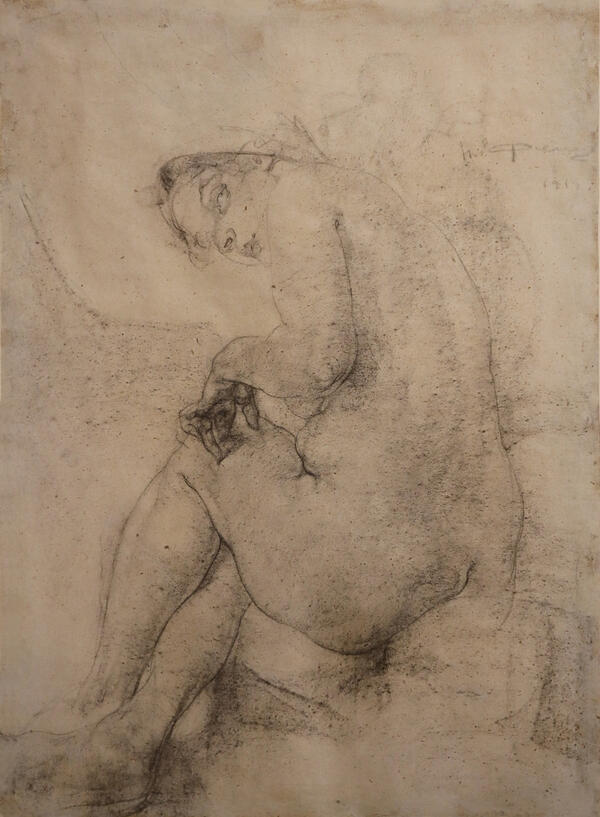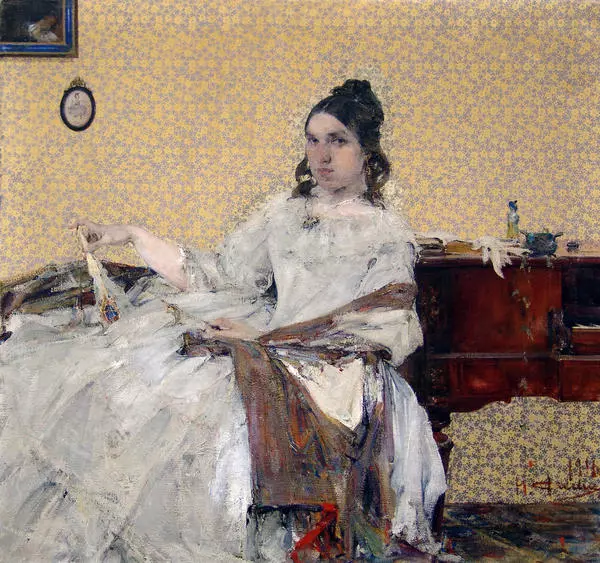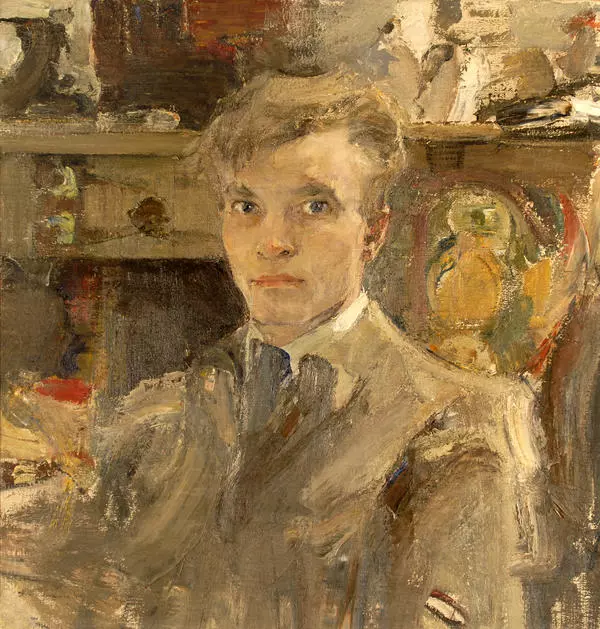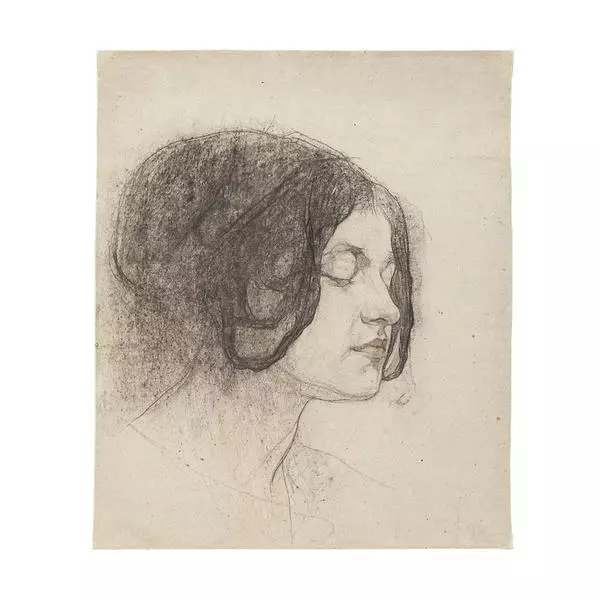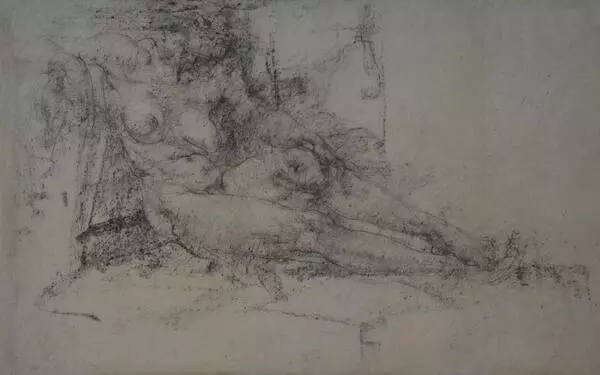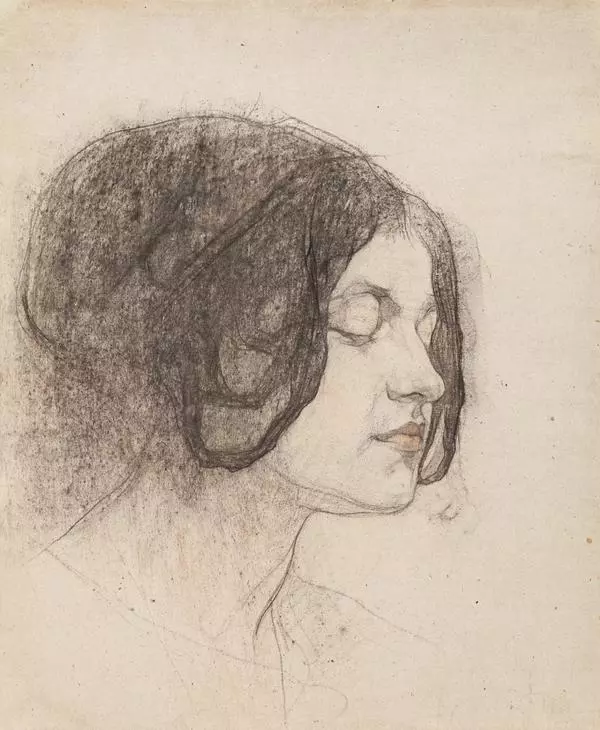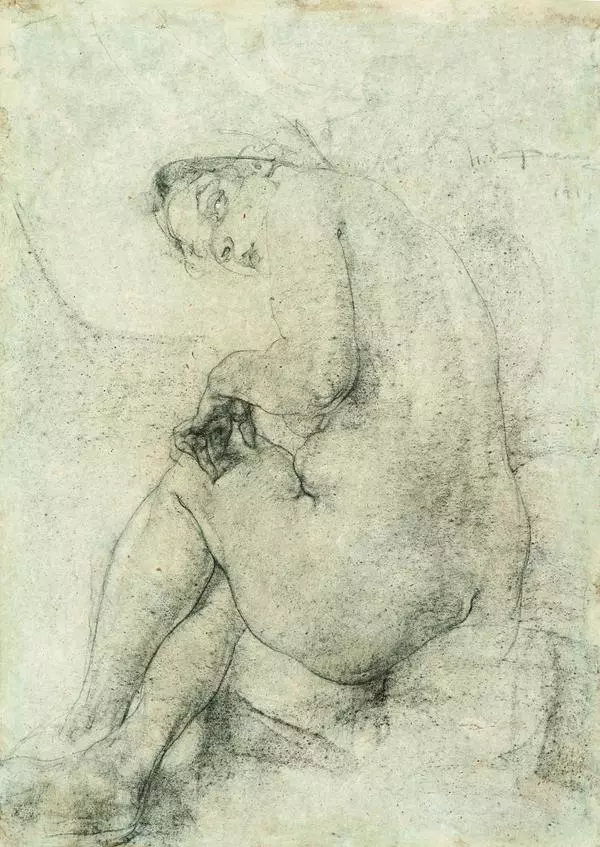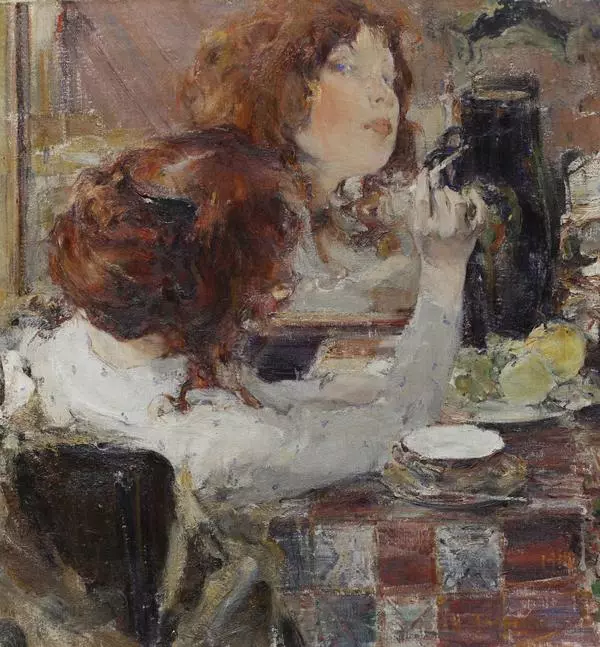When painting Portrait of the Father Nickolay Feshin used a low point of sight as if he were looking at his father from the bottom upwards. This gives significance to the character, while the whole work looks monumental. The artist chose a natural and seemingly random moment – the father has come in from the street, sat down on the armrest and took off his glasses. The passing moment reveals the essence. This portrait highlights the man’s firmness, while the strong knotty fingers suggest that his life is full of hard work. The character’s face looks surprisingly extensive and flexible due to vibrant brushstrokes.
Nickolay Feshin’s father forever remained the most important person in the artist’s life and became his first teacher. He appreciated Nickolay’s craving for art and did a lot to educate his son as an artist in spite of financial problems. Ivan Feshin was a talented woodcarver and dedicated his life to making icon stands.
Nickolay Feshin’s father forever remained the most important person in the artist’s life and became his first teacher. He appreciated Nickolay’s craving for art and did a lot to educate his son as an artist in spite of financial problems. Ivan Feshin was a talented woodcarver and dedicated his life to making icon stands.
Since the age of 9 the boy had worked in the father’s gilding and carpentry shop assisting him with orders. The shop often received silver awards at scientific and industrial exhibitions for ‘high-quality and broad-ranging works’.
In spite of successful work Nicklolay’s father gradually went bankrupt. According to the artist, Ivan Feshin never kept accurate scores, and his business became loss-making. By the time when the boy was supposed to start school the father had sold all the property to pay off his debts. “That was the time when we were always moving around, and each new apartment was worse than the than the previous one… However, my father never complained or moaned his fate. He tried to find work in nearby villages and always took me there in summer… The fresh air and freedom of country life were like heaven on Earth after the grip of the city. I still love the village and fear the city, because in my childhood all beauty was associated with villages…”, the artist wrote.
The portrait was painted in 1918, which was the time of trouble for the country. Back then Nickolay Feshin had to give up teaching at Kazan art school, but managed to move his studio to a safe place. He left for Vasilyevo settlement near Kazan together with his family. According to the artist’s memories, in 1919 ‘the people were unmercifully killed by famine and typhoid’. That year the artist’s father died of typhoid, while his mother deceased in a few months.
In spite of successful work Nicklolay’s father gradually went bankrupt. According to the artist, Ivan Feshin never kept accurate scores, and his business became loss-making. By the time when the boy was supposed to start school the father had sold all the property to pay off his debts. “That was the time when we were always moving around, and each new apartment was worse than the than the previous one… However, my father never complained or moaned his fate. He tried to find work in nearby villages and always took me there in summer… The fresh air and freedom of country life were like heaven on Earth after the grip of the city. I still love the village and fear the city, because in my childhood all beauty was associated with villages…”, the artist wrote.
The portrait was painted in 1918, which was the time of trouble for the country. Back then Nickolay Feshin had to give up teaching at Kazan art school, but managed to move his studio to a safe place. He left for Vasilyevo settlement near Kazan together with his family. According to the artist’s memories, in 1919 ‘the people were unmercifully killed by famine and typhoid’. That year the artist’s father died of typhoid, while his mother deceased in a few months.

